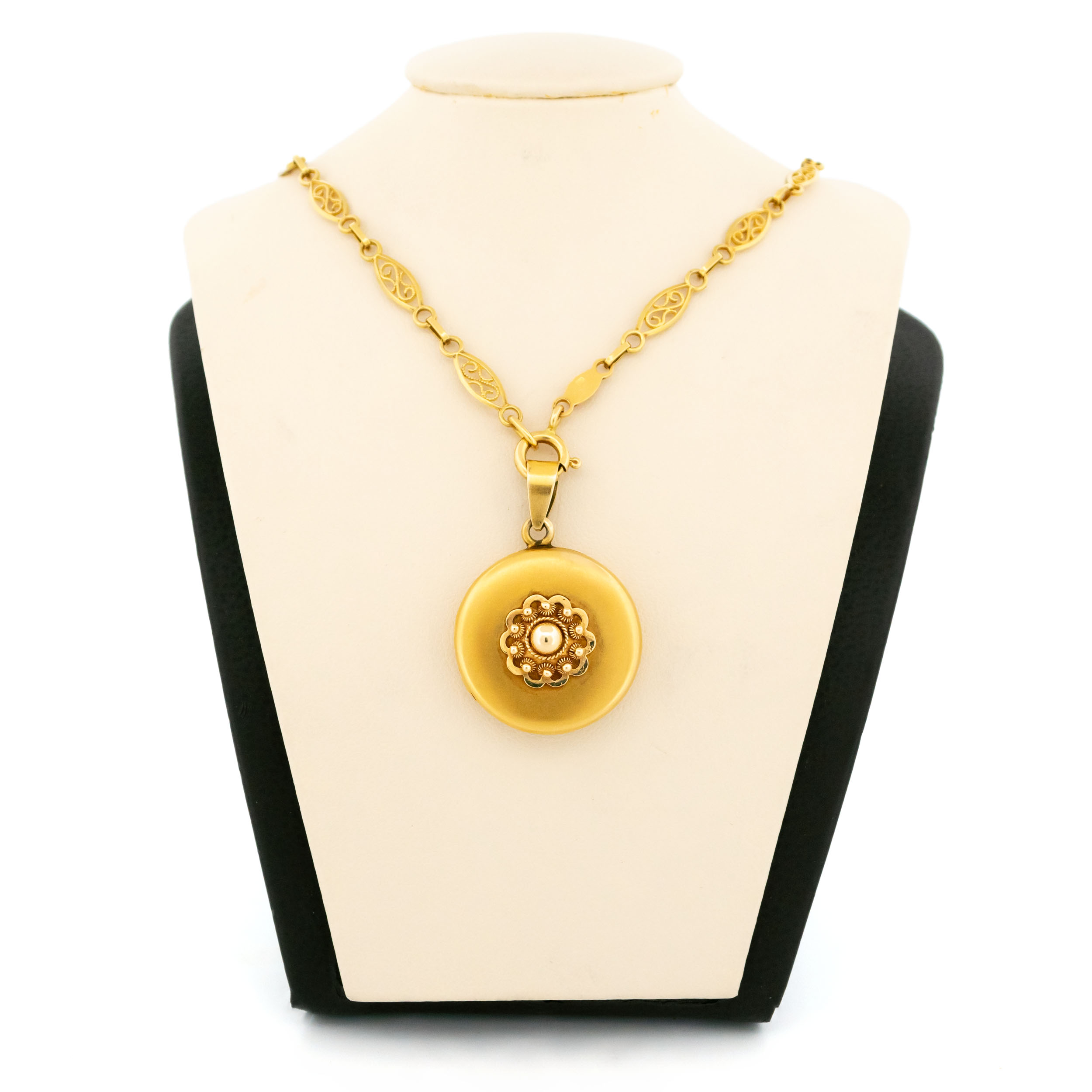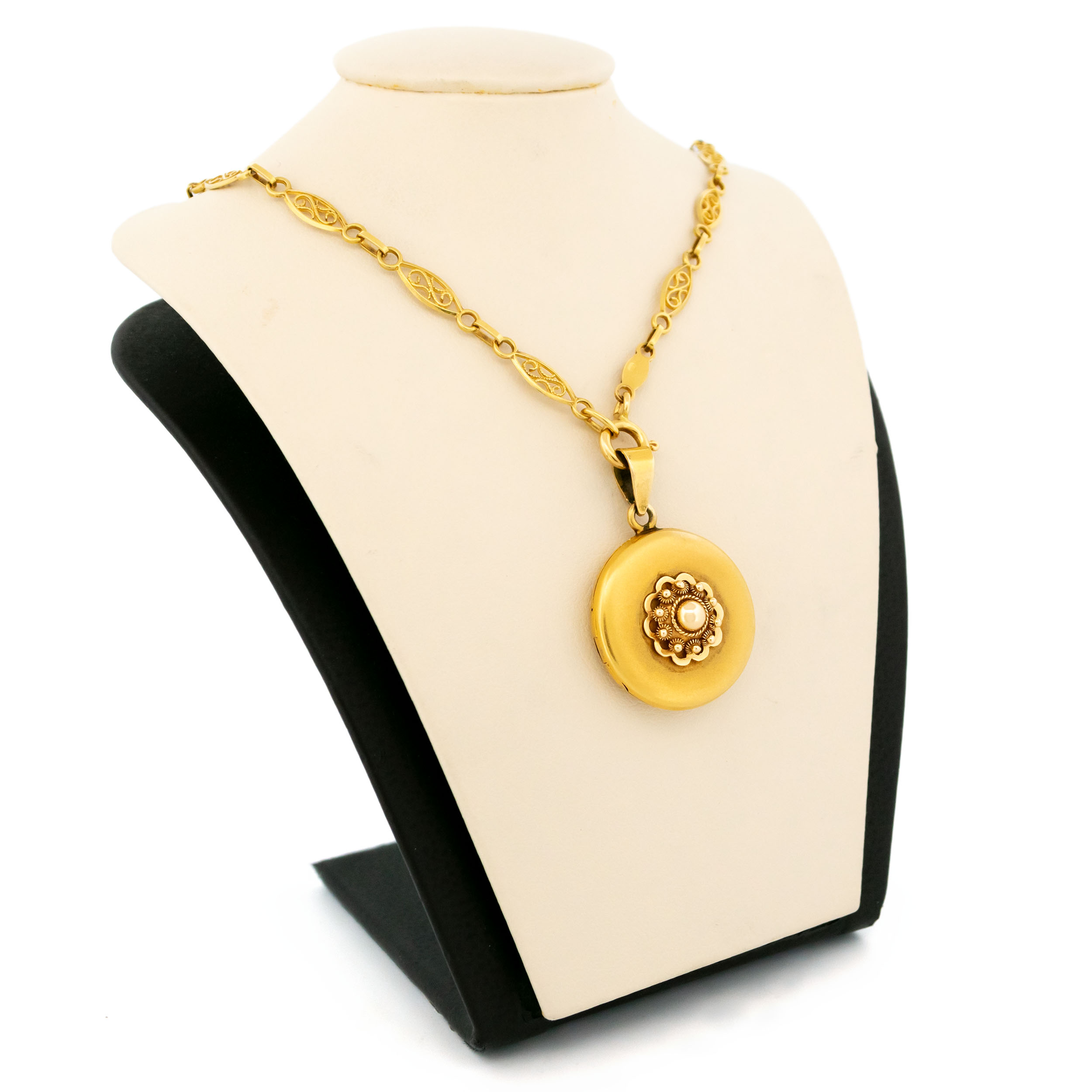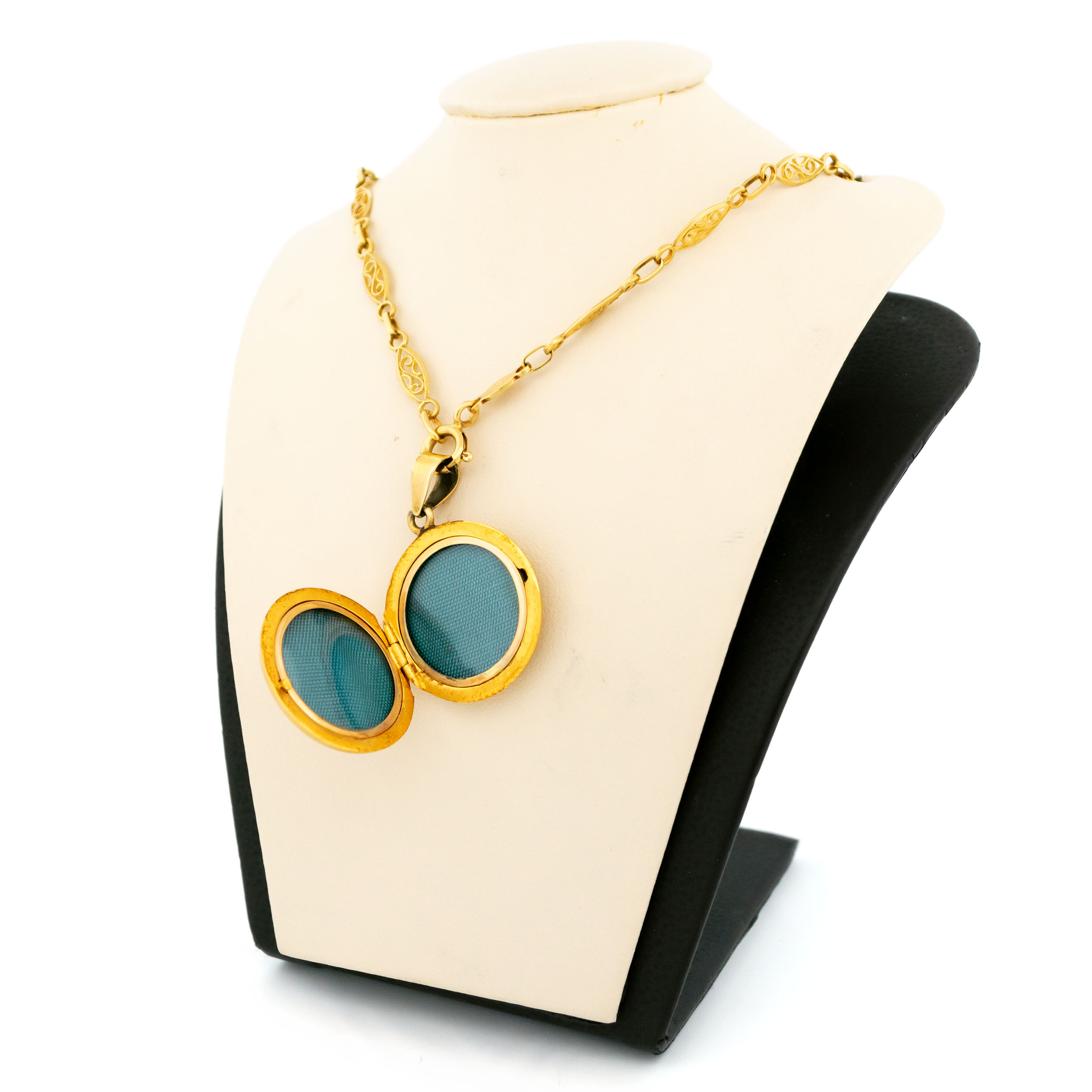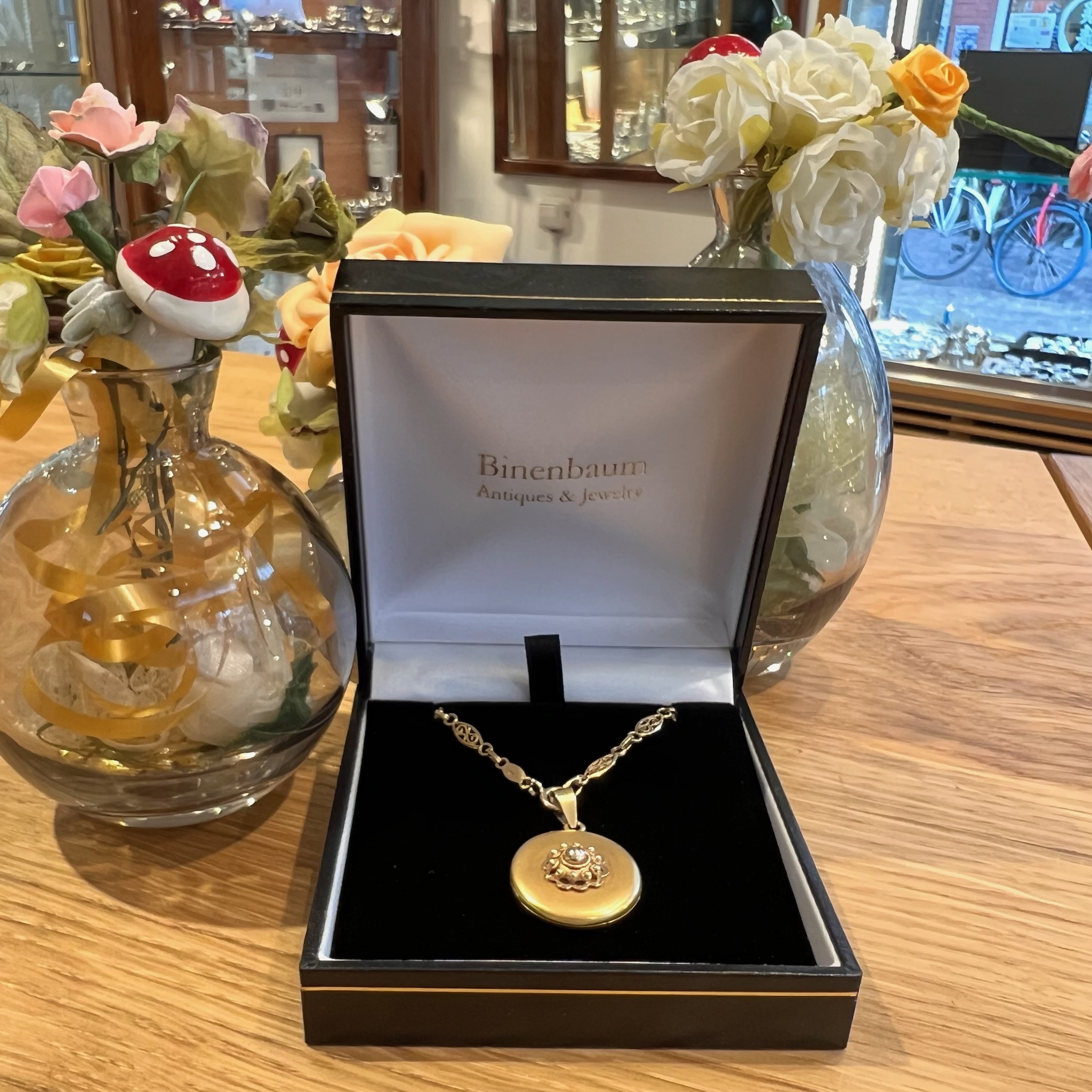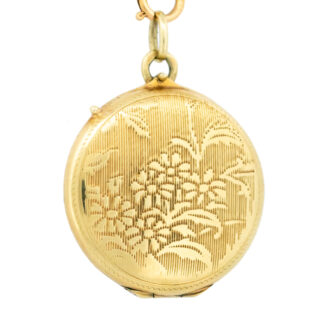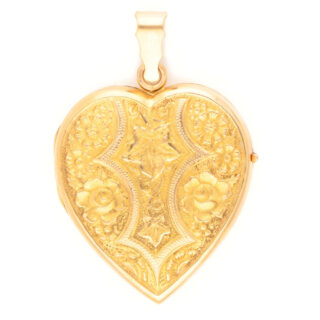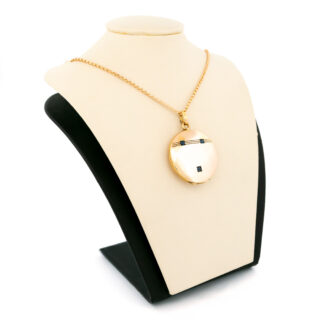Experience timeless elegance with our Antique Zeeuwse Locket. Crafted in 18k gold and tipping the scales at 6.55 grams, this locket is a beautiful embodiment of Dutch 🇳🇱 artisanship. Measuring 33x22mm, it’s an ideal size to keep your treasured memories. Note: Dutch assay hallmark mark. chain is not included.
Videos
Details: 14k Locket, Note: Dutch assay hallmark mark. chain is not included. *.
Design Era: Antique.
Dimensions: 33x22mm.
Weight in grams: 6,5.
Condition: Very good condition – slightly used with small signs of wear.
Shipping and Pickup: This gorgeous piece ships from our store located in the center of Amsterdam, The Netherlands. We offer both registered shipping and local pickup at our store. In the case of local pickup, any applicable shipping costs will be refunded.
About Us: Add some sparkle to your style with Binenbaum.com. We offer a stunning selection of antique and vintage jewelry that you won’t find anywhere else. From timeless rings and dazzling necklaces to unique brooches, we have something for every taste and occasion. Visit our website today and treat yourself to a piece of history.
| Design Era | |
|---|---|
| Design & Historical Context | The term "antique" refers to something that is more than 100 years old, and this includes jewelry that was created and used over several decades or eras. Antique jewelry can include pieces from a variety of different time periods, such as the Georgian, Victorian, Edwardian, and Art Deco periods. Each of these periods is characterized by its own unique style and artistic movements, and antique jewelry from these periods is often highly sought after by collectors and enthusiasts. Georgian jewelry, for example, is known for its intricate detailing and use of precious materials such as gold and diamonds, and is often influenced by the Baroque, Rococo, and Neoclassical styles. Victorian jewelry, on the other hand, is known for its intricate detailing and use of precious materials such as gold and diamonds, and is often influenced by the Romantic and Gothic styles. Edwardian jewelry is characterized by its delicate and intricate detailing, and is often influenced by the Art Nouveau, the Arts and Crafts movement, and the Belle Époque. Antique jewelry is often highly collectible and is valued for its unique style, craftsmanship, and historical significance. It can be found at antique shops, vintage stores, and online marketplaces. |
| Materials & Craftsmanship | 14k: The Durable Choice for Everyday Elegance 14k gold is a popular and practical choice in fine jewelry, known for its durability, affordability, and beautiful color. The "14k" signifies that the gold is composed of 58.3% pure gold and 41.7% alloyed metals, such as copper, silver, nickel, or zinc. This combination results in a strong and resilient material that can withstand the rigors of daily wear, making it an ideal option for those seeking both beauty and durability. Historically, gold has always been a symbol of wealth and luxury, and 14k gold strikes a perfect balance between the rich appearance of gold and the strength needed for everyday use. Because of its lower gold content compared to 18k or 24k gold, 14k gold is more affordable, making it a popular choice for a wide range of jewelry pieces. In modern jewelry, 14k gold is appreciated for its versatility and variety. It is available in several colors, each achieved by mixing gold with different metals: Yellow Gold: A classic and timeless choice, 14k yellow gold has a warm, golden hue that complements most skin tones and is well-suited for both modern and traditional designs. White Gold: Created by alloying gold with white metals like nickel or palladium, 14k white gold has a sleek, silver-like appearance. It is often rhodium-plated for added shine and is a popular choice for engagement rings and other contemporary jewelry. Rose Gold: Achieved by mixing gold with copper, 14k rose gold has a soft, pinkish hue that has gained popularity for its romantic and vintage appeal. It is a favorite for those seeking a unique and stylish alternative to traditional gold colors. 14k gold is commonly used in a wide array of jewelry, including rings, necklaces, bracelets, earrings, and watches. Its durability makes it especially suitable for pieces that are worn daily, such as wedding bands and engagement rings, where the balance between strength and beauty is crucial. 14k gold is more than just a practical choice; it is a symbol of enduring style and everyday luxury. Its ability to retain the look of gold while offering greater resistance to scratches and dents makes 14k gold a versatile and timeless option for any jewelry collection. Whether in a simple band or an elaborate design, 14k gold offers a perfect blend of elegance and durability that can be enjoyed for years to come. |
| Dimensions | 33x22mm |
| Gender | |
| Weight (in grams) | 6,5 |
| Condition | Very good condition – slightly used with small signs of wear |
Enhance the Beauty of Your Jewelry with Proper Care
Wearing your jewelry is a special way to express yourself and add a touch of personal style to any look. However, to ensure your jewelry remains in pristine condition, there are a few simple steps you need to take to keep it looking its best.
General Care Instructions:
Remove jewelry when showering or bathing, especially when at the beach, in the sea or in chlorinated water.
Avoid wearing jewelry while doing physical work such as housekeeping, gardening or exercise.
Storing your jewelry in a dry and cool place will help protect it from moisture, dirt and dust.
Keeping it away from harsh chemicals such as bleach, ammonia and chlorine will help to avoid discoloration and damage.
Cleaning your jewelry regularly with a soft cloth will help to keep it looking shiny and new.
Avoid exposing your jewelry to extreme temperatures, such as leaving it in direct sunlight or near a heater, as this can cause damage.
Handle your jewelry carefully and avoid dropping it, as this can cause the stones to loosen or the metals to scratch.
Finally, if possible, have your jewelry professionally checked and serviced. This will ensure that any potential problems are spotted and fixed before they become worse.
By following these tips, you can enjoy your precious jewelry for many years to come.
Related Products
-
Paste Pearl 20k Round-Shape Locket 15618-8602
€ 1.495,00 VAT incl. (where applicable) -
14k Memorial Hair Locket 13829-8228
€ 695,00 VAT incl. (where applicable) -
18k Heart-Shape Locket 16574-8887
€ 2.295,00 VAT incl. (where applicable) -
Sapphire 14k Round-Shape Locket 15875-8664
€ 1.495,00 VAT incl. (where applicable) -
9k Heart-Shape Locket 11404-8558
€ 595,00 VAT incl. (where applicable) -
14k Heart-Shape Locket 13830-8229
€ 895,00 VAT incl. (where applicable) -
14k Zeeuwse Knop Stud Earrings 16843-9003
€ 1.195,00 VAT incl. (where applicable) -
Coral Pearl 14k Cluster Ring 16235-8762
€ 1.495,00 VAT incl. (where applicable)
- Home
- Collection
- Fine Jewelry
- Silver Jewelry
- Silverware
- Boxes
- Candlesticks
- Salt and pepper shakers
- Miniatures
- Salt cellars
- Spoon Set
- Condiments
- Frames
- Napkin Ring
- Spoon
- Oddities
- Cups
- Vases
- Cutlery
- Serving Spoon And Cake Server
- Candlesticks
- Baskets
- Hanukkiah
- Spice Tower
- Yad
- Tea Set
- Sugar Castor
- Napkin Rings
- Wine Bottle Coaster
- Wine Stopper
- Tea Pot
- Jugs
- Rattles
- Hip Flask
- Miscellaneous
- Rings 💍
- About
- Contact
